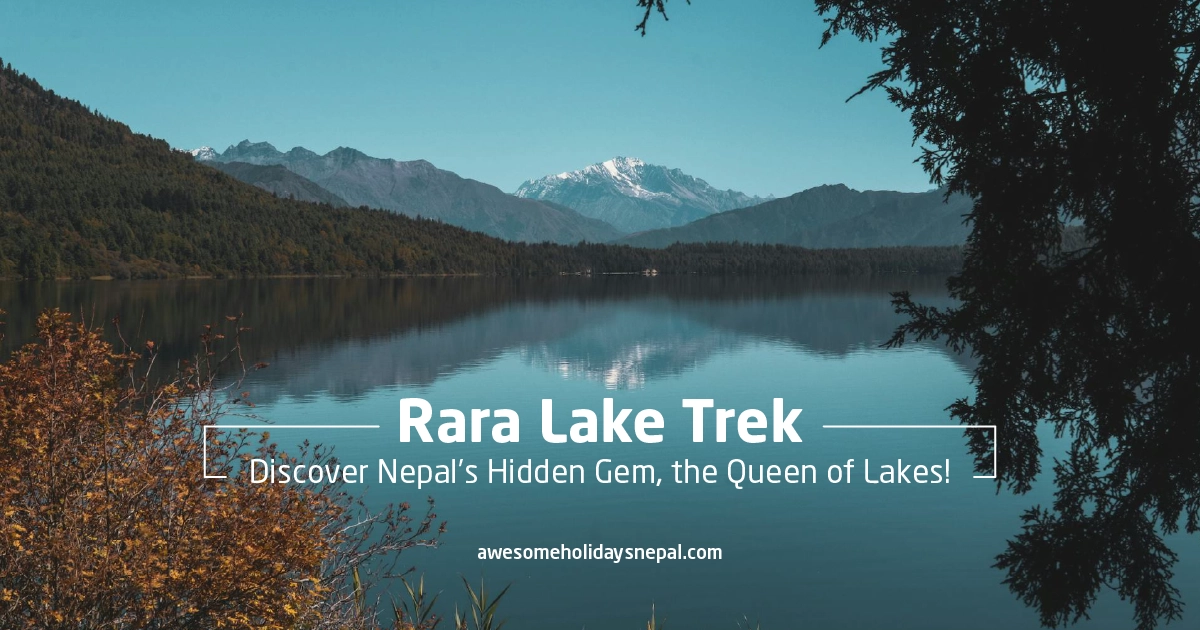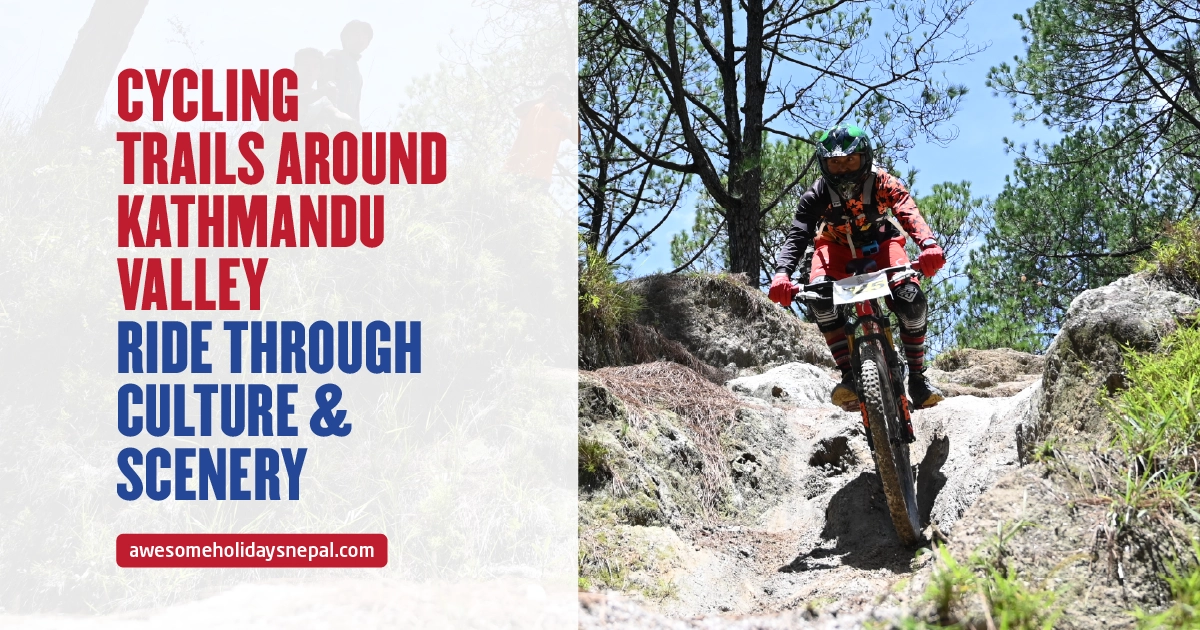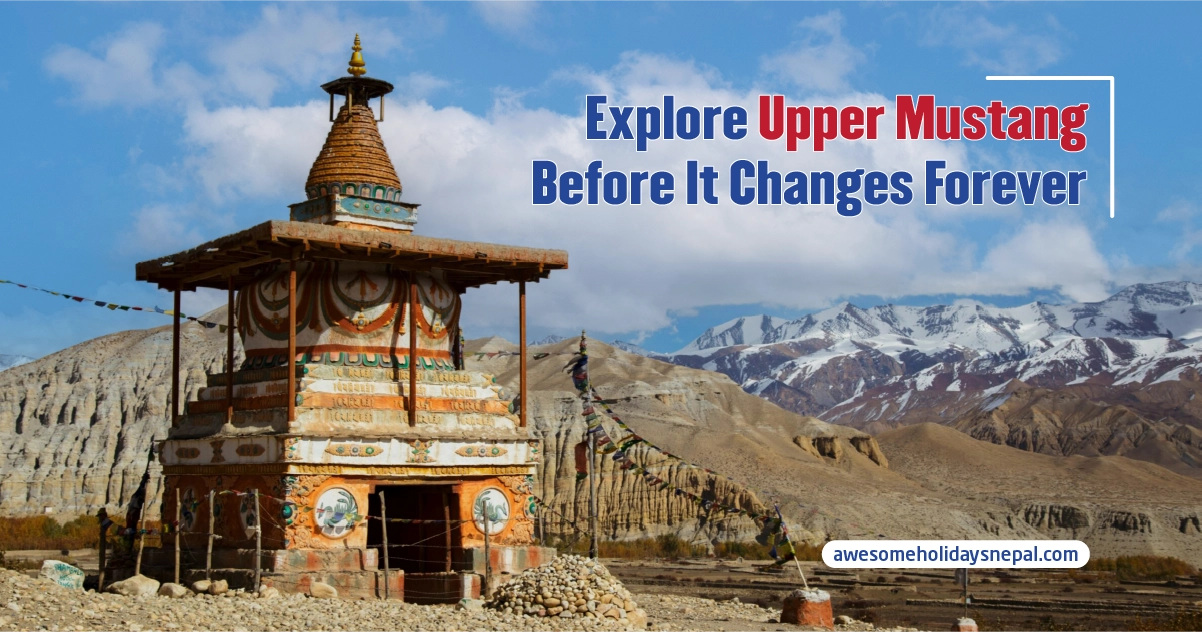Top 14 Highest Peaks in the World: How Many Does Nepal Have?
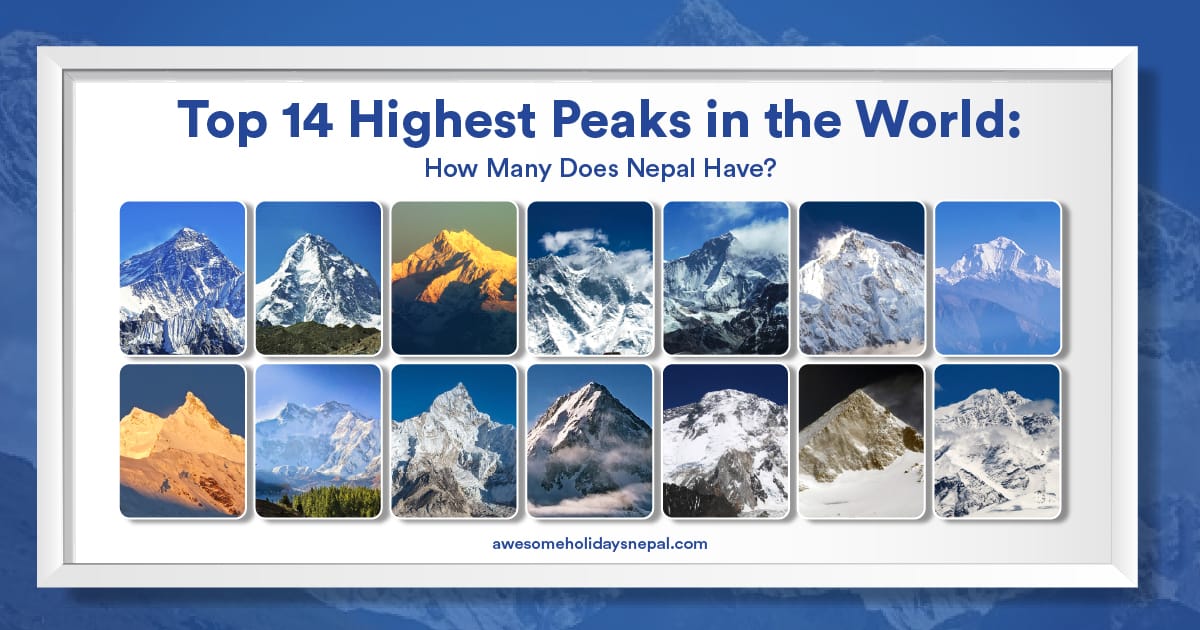
Nepal is the first country that mountain lovers think of when it comes to the highest peaks. Indeed, it’s true and apparent, but does Nepal have all 14 of the highest peaks in the world? Not really!
Though Nepal might not own all the tallest mountains in the world, it does own most of them. Eight of the 14 highest peaks in the world are found in Nepal, including Mount Everest, the tallest one.
In this article, we will explore the highest peaks of the world, their appearance, and locations, and learn about those found in Nepal.
Top 14 Highest Peaks in the World
Among the numerous mountains in the world, a few have an altitude above 8000 meters above sea level, often known as eight-thousanders. Namely, there are 14 such peaks in the world; however, two of them are different peaks of the same mountain range, i.e., Annapurna and Gasherbrum.
Following are the details on the top 12 highest peaks in the world:
| S.N. | Name of the Peak | Elevation | Location | Interesting Facts |
|---|---|---|---|---|
| 1 | Everest | 8848.88m / 29032ft | Nepal and Tibet | The tallest mountain on the earth recently increased in height by 0.88 m |
| 2 | K2 | 8610m / 28250 ft | Pakistan and China | It is also called the savage Mountain or Killer Mountain for climbing difficulty. |
| 3 | Kanchenjunga | 8586m / 28169 ft | Nepal and India | It has five different summits, meaning it translates to Five Treasures of Snow. |
| 4 | Lhotse | 8516m / 27940 ft | Nepal and Tibet | Connected to Mt. Everest via a massive ridge and also called South Peak for this connection. |
| 5 | Makalu | 8463m / 27766 ft | Nepal and Tibet | It is shaped like a 4-face pyramid with sharp edges. |
| 6 | Cho Oyu | 8201m / 26906 ft | Nepal and Tibet | It is the second-most climbed among the top 14 highest mountains. |
| 7 | Dhaulagiri | 8167m / 26795 ft | Nepal | The highest peak that lies solely in Nepal. |
| 8 | Manaslu | 8163m / 26781 ft | Nepal | The trail along the peak used to be a salt-trading route. |
| 9 | Nanga Parbat | 8125m / 26660 ft | Pakistan | Called the Killer Mountain for the risks associated with it. |
| 10 | Annapurna I | 8091m / 26545 ft | Nepal | Named after the goddess of abundance in Hindu culture. |
| 11 | Gasherbrum I | 8068m / 26470 ft | Pakistan | Discovered while surveying K2 and it is also called the Hidden Mountain. |
| 12 | Broad Peak | 8047m / 26400 ft | Border of Pakistan and China | Also called Breithorn of Baltoro, i.e., the three-headed peak of the European Alps. |
| 13 | Gasherbrum II | 8035m / 26360 ft | Border of Pakistan and China | Classified as a technical ascent. |
| 14 | Shishapangma | 8013m / 26289 ft | Central Tibet | Also called the God of Grasslands. |
Get to Know the 8 Highest Mountains in Nepal
1. The Mount Everest
Height: 8848.86 m
Location: Himalayas, Nepal/Tibet, China
Coordinate: 27.9881° N, 86.9250° E
Highest Mountain of the world
First ascent: May 29, 1953
Standing tall at an altitude of 8848.88 meters (29032 feet), Mount Everest, also known as Mount Sagarmatha, comes first on this list. Located at the border between Nepal and the autonomous region of China, Mount Everest stands out as the crest of the Himalayas region of Southern Asia.
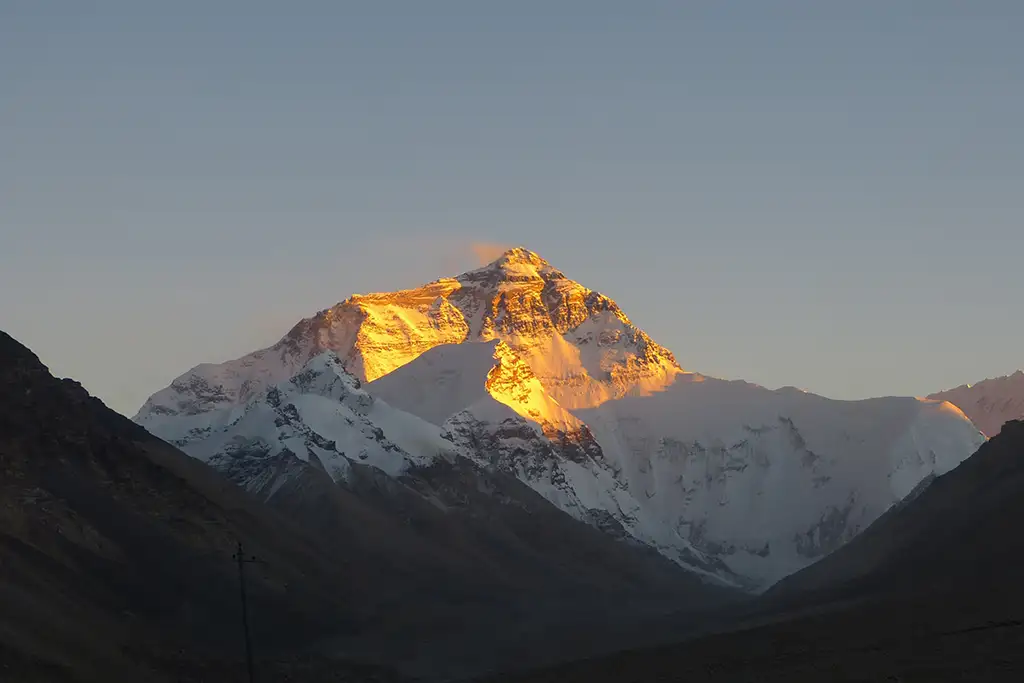
Two daring climbers, Sir Edmund Hillary and Tenzing Norgay Sherpa, first ascended the summit in 1953, and since then, it has been the most preferred mountain to climb. Every year, thousands of people visit Nepal to summit Everest or trek to the Everest base camp to enjoy the view of this majestic mountain.
Being located at such a high altitude, the temperature keeps dropping, the oxygen level is also low, and the climatic conditions keep shifting rapidly. This often causes altitude sickness in adventurers, leading to extreme symptoms that may even lead to death. Hence, it is necessary to acclimate your body, get proper training, and book a trek with a reliable company to enjoy the trip effortlessly.
2. Kanchenjunga
Height: 8568 meters (28,169 feet)
Location: Himalayas, Eastern Nepal, Sikkim in India, and Tibet.
Coordinate: 27.7025° N, 88.1475° E
First ascent: 1955, Joe Brown and George Band
Donning an altitude of 8568 meters (28,169 feet), Kanchenjunga is the third-highest peak in the world and the second one in Nepal. It borders three different countries: eastern Nepal, Sikkim in India, and Tibet, and it is also part of the Great Himalayan range.
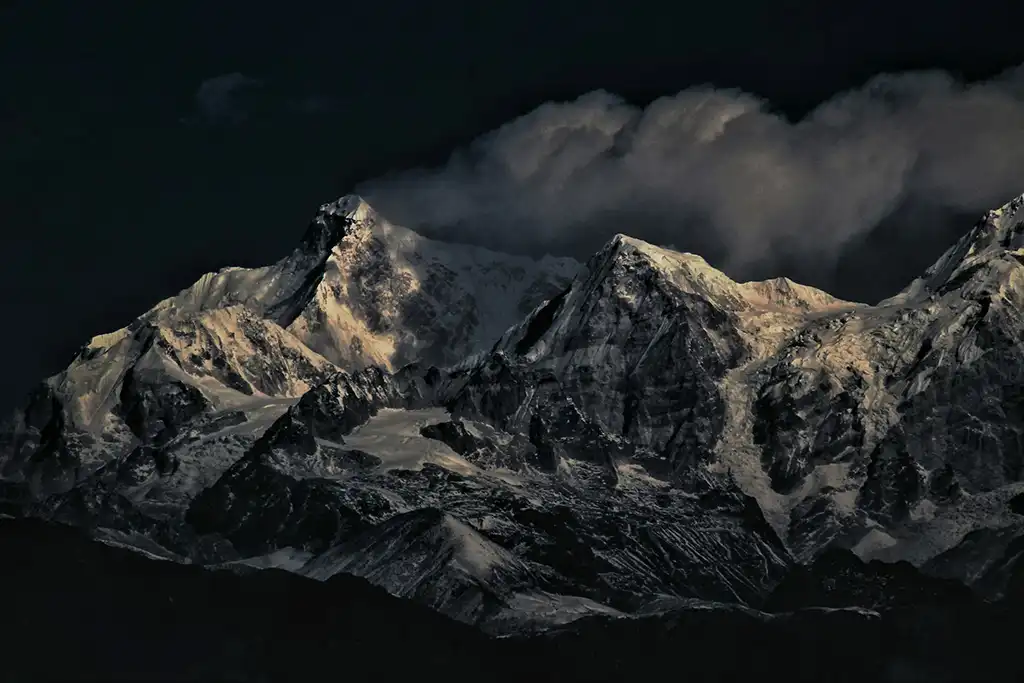
The mountain gets its name from its five peaks, translating to ” Five Treasuries of the Great Snow.” Mount Kanchenjunga holds mythological and religious values for the local inhabitants of the region. Given its remoteness, the risk of avalanches, and extreme weather conditions, very few attempt to climb this peak, making it worth climbing only for serious summiteers.
There are four different routes to Kanchenjunga, three of which take you through Nepal and one through Sikkim. Of these, the South Base Camp route, which begins from Khandenba in Nepal, is most preferred compared to the Kanchenjunga Glacier Route, the Yalung Glacier Route of Nepal, and the North Base Camp Route on the Sikkim side. Apart from the summit, the Kanchenjunga Circuit and base cam trek are equally famous among adventurers.
3. Lhotse
Height: 8,516m
Location: Himalayas, Nepal and part of Tibet
Coordinate: 27.9626° N, 86.9336° E
4th Highest Mountain
First ascent: 18 May 1956, by Fritz Luchsinger and Ernst Reiss(Swiss team)
Neighboring the tallest peak in the World, just 3 km away, Mt. Lhotse is the fourth tallest peak, with an elevation of 8516 meters (27940 feet) from sea level. Often referred to as South Peak in Tibetan, this peak is connected to Everest via a massive ridge, the South Col. Usually ascended through the west face, the mountain has three summits, namely Lhotse Main, Lhotse Share, and Lhotse Middle.
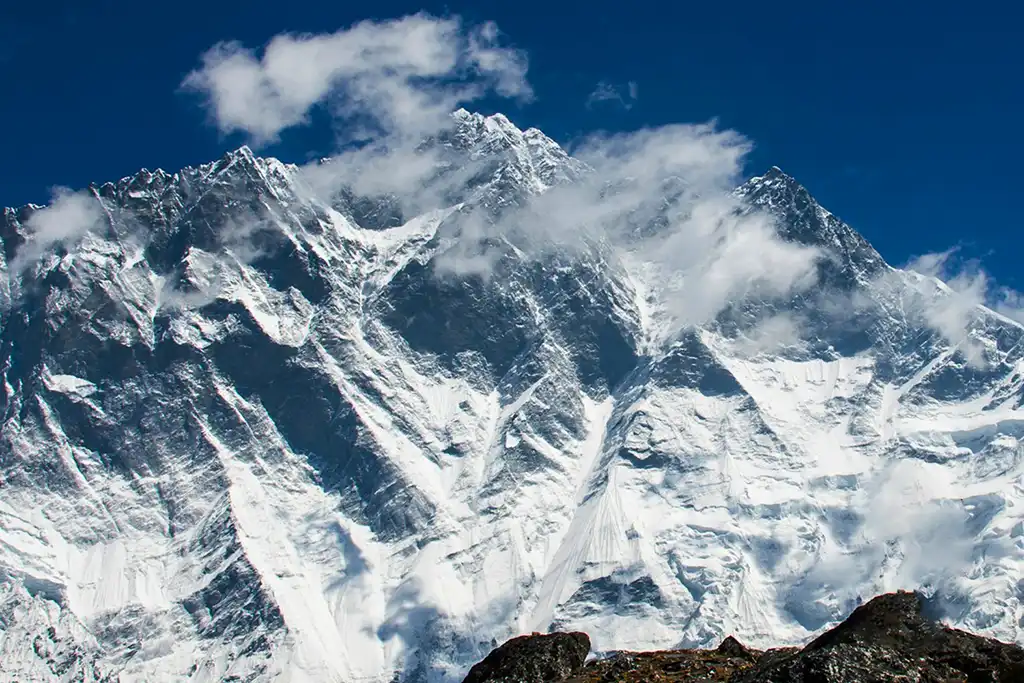
Since the peak shares a trekking route with Everest, people who successfully summit Everest also climb it. On May 18, 1956, two Austrian climbers, Fritz Luchsinger and Ernst Reiss, were the first ones to climb the peak in an expedition led by Norman Dyhrenfurth.
Read about the great polish climber Jerzy Kukuczka, who lost his life in search of the way to top of Lhotse via the south face:
Jerzy Kukuczka Legendary Mountaineer and His Historic Conquests in the Himalayas
4. Makalu
Height: 8,485m
contradicts,8463 meters (27766 feet) in Awesome,
Location: Himalayas, Nepal/Tibet Autonomous Region, China
Mountain Range: Mahalangur
5th Highest Mountain
First ascent: May 15, 1955, by Lionel Terray and Jean Couzy of a French expedition team
Another peak on the Mahalangur Himalayan Range, Mount Makalu, is the fifth-highest mountain in the world, with an altitude of 8463 meters (27766 feet). The mountain’s name comes from Sanskrit, representing Lord Shiva, a Hindu god known for his destructive power. Synonymous to its name, the peak has a four-faced pyramid-like structure with sharp, razor-like edges that make it difficult to climb.
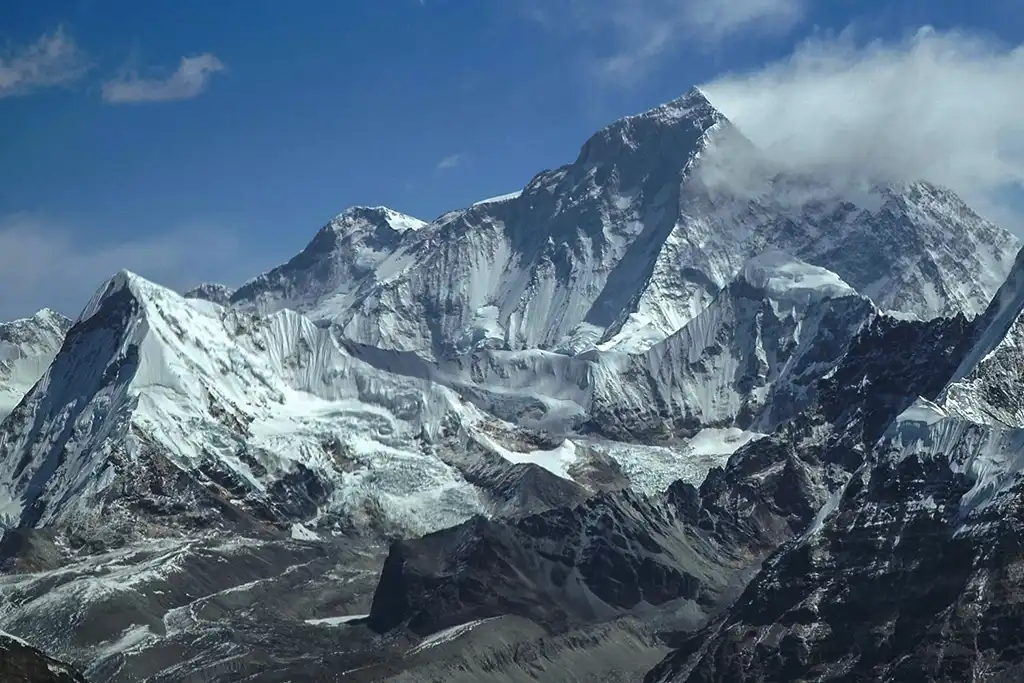
Unlike other higher mountains, Makalu stands out as an isolated peak surrounded by Nepal’s other three highest mountains. It lies on the Nepal-Tibet border and offers several climbing routes to the climbers, each with its challenges. The Southeast Ridge is the most chosen climbing route for ascending Mount Makalu.
The peak is part of the Makalu Barun National Park and conservation area, so the trek offers amazing scenery. It wasn’t known to all until French climbers planned an expedition to the peak in 1954. Later, a French expedition team, Lionel Terray and Jean Couzy, first climbed the mountain in May of 1955.
5. Cho Oyu
Height: 8,188m
Location: Himalayas, Nepal/Tibet Autonomous Region, China
Sixth Highest Mountain
Range: Mahalangur
First ascent: October 19, 1954 by Herbert Tichy, Joseph Jöchler, Pasang Dawa Lama.
First winter ascent: 12 February 1985 Maciej Berbeka and Maciej Pawlikowski)
Among all the eight thousand peaks, Mount Cho Oyu is considered one of the most beautiful because of the prettiest sunsets that fall on its snow-capped peak. Its Tibetan name translates to “Turquoise Goddess,” and it has an elevation of 8201 meters (26906 ft).
This sixth-highest peak in the world is actually the second most ascended peak after Mount Everest. Given its ease of climbing and being just a two-day trip away from Kathmandu, several climbers attempt to ascend it each climbing season. The very first people to climb this peak were a team led by Eric Shipton, including Edmund Hillary, George Lowe, Charles Evans, and Tom Bourdilon.
In fact, these people tried to climb the mountain in preparation for ascending Everest. However, they gave up after difficulties with ice at 6650 meters. Later, three climbers, Tichy, Joseph Jocler, and Pasang Dawa Lama, conquered the peak view northwest ridge in 1954.
6. Dhaulagiri
Height: 8,167m
Location: Nepal
7th Highest Mountain.
Often referred to as the White Mountain, the Dhaulagiri is the seventh tallest mountain in the world, at 8167 meters (26795 feet). Unlike most of the other peaks of the Himalayas, it is the only peak that lies fully in Nepal.
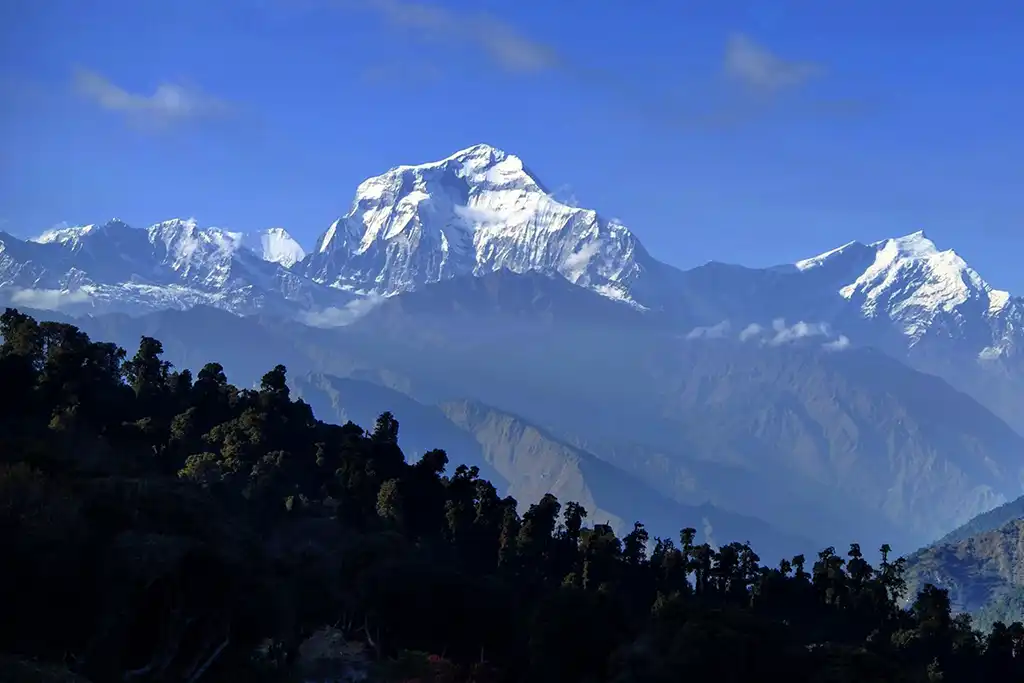
In fact, this mountain was considered the highest in the world for 30 years until the discovery of Mount Kanchenjunga. Also, until the discovery of this peak by a European captain, William Webb, the Andes in South America was thought to be the highest peak in the world. However, a group of Swiss Ernst Forrer and Albin Schelbert, Nepali Nawang Dorje and Nima Dorje, German Peter Dienr, and Austrian Kurt Diemberger first climbed the peak in 1960.
7. Manaslu
Height: 8,163m
Location: Nepal
Coordinate: 28.6136° N, 83.8736° E
8th Highest Mountain
The eighth-highest mountain in the world, Manaslu is 8163 meters (26781 ft) tall and is well-known for its serene beauty of snow-capped peaks, luscious green forests, and rich cultural heritage. In Sanskrit, the peak’s name, ” Manasa,” translates to “the mountain of the spirit.”
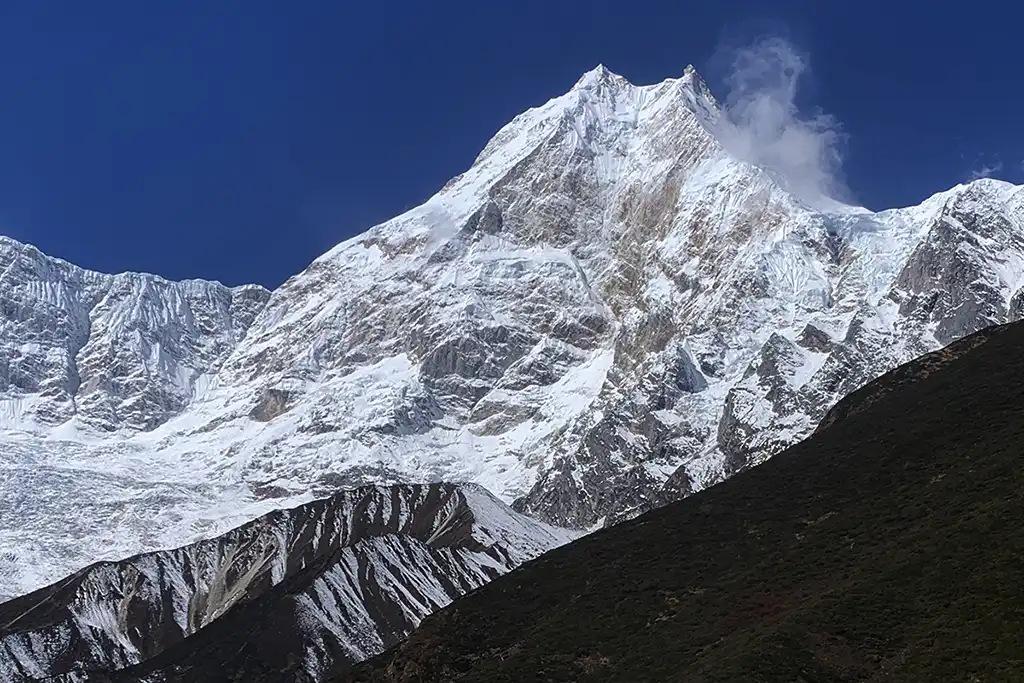
Given the easy trails connected with ridges, it is considered a comparatively more straightforward peak to climb than the other eight-thousanders. Since Manaslu lies just 64 kilometers east of Annapurna, the trekking route also passes down to Annapurna.
It was the only peak that the Japanese expedient attempted and successfully ascended; until then, it was the virgin peak. Toshio Imanishi and Norbu Sherpa were the first people to climb this peak and make a record.
8. Annapurna I
Coming to the last eight thousanders found in Nepal, the Annapurna I is the 10th-highest mountain in the world and the 8th-highest in Nepal. Actually, the Annapurna range has two different peaks, which slightly differ in height, and the Annapurna I is the tallest, with an altitude of 8091 meters (8091 meters).
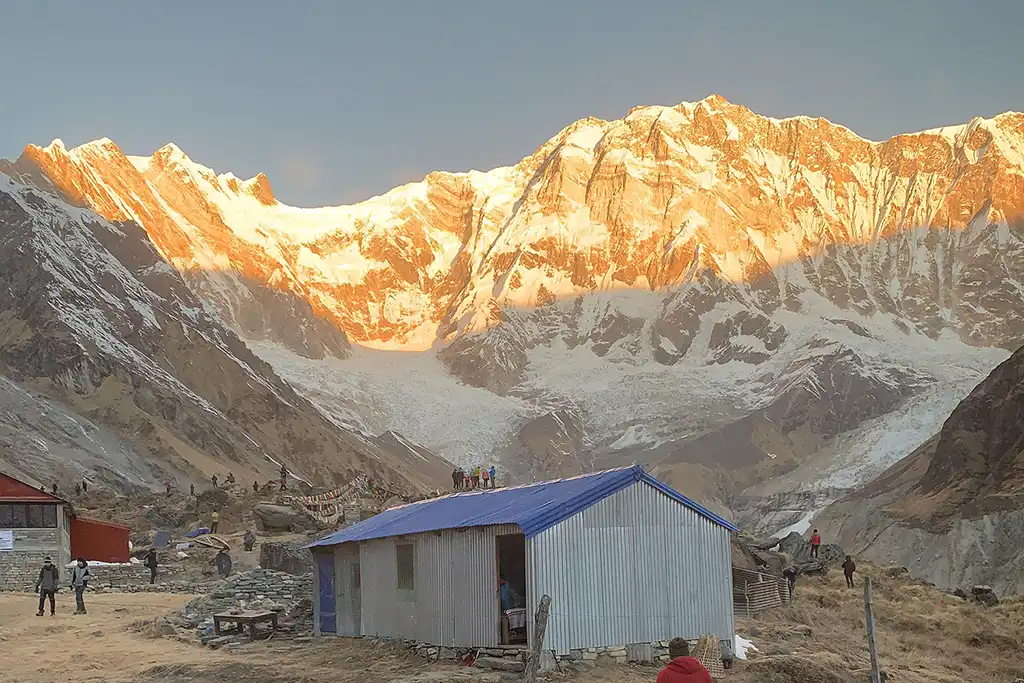
This mountain is named after a Hindu goddess, “Annapurna,” also known as the goddess of yield or abundance. Other than the summit, the base camp region of Annapurna is also quite a popular trekking destination. In fact, it was the very first among the list of peaks over 8000 meters to be ascended.
Witness the Mountains Up-close
It is pretty evident that there is no other destination better than Nepal if you want to experience what the world’s highest mountains feel like. With more than eight highest peaks and many other mountains above 7000 meters, 6000 meters, and much more, Nepal is the ideal destination for mountain lovers.
Whether you want to ascend the peak or witness it up close, book a trip with Awesome Holidays Nepal to get started.
Never stop exploring!
Related blog posts
Discover a choice of tourist destinations loved by most of our visitors. Whether you're on a jungle safari to spot rare animals or walking through a world heritage site, these well-planned itineraries cover the major highlights of Nepal.


